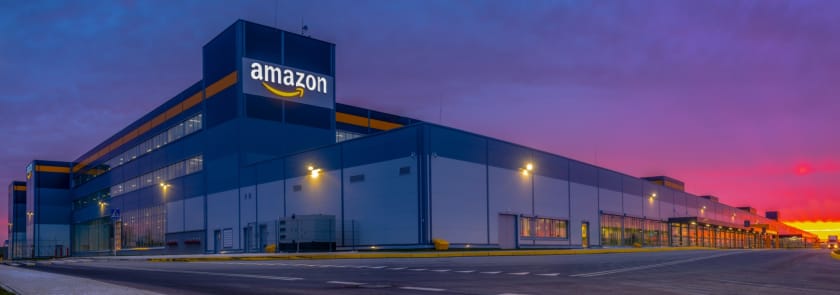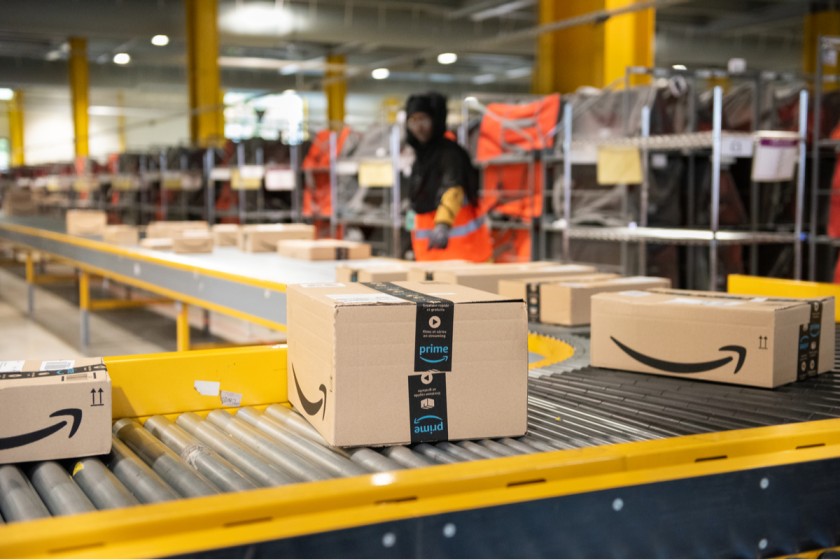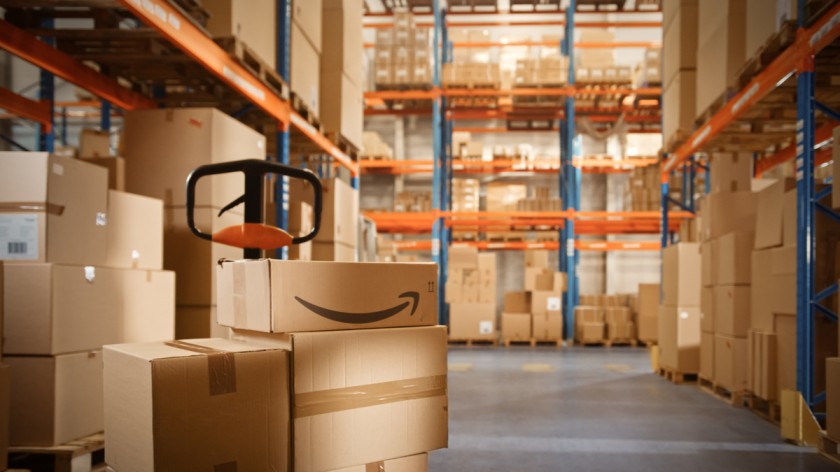Tips to Ease B2B Logistics Challenges for Fashion Businesses



The process of planning and execution of efficient transportation and storage of goods from the point of origin to the consumption point is known as logistics. Its purpose is to address client needs in a timely and cost-effective manner.
Fashion fulfilment centres go a long way in optimising their intralogistics operations with the aid of current technology like data analytics, open-platform software, and material handling systems – combined with the correct knowledge and skills of a systems integrator. Fashion fulfilment and distribution centres have a number of issues, including the rise of e-commerce, dealing with omnichannel customers, and developing practical solutions to manage returns. It is tough and expensive to design new logistics operations to satisfy these issues. Therefore, the following tips can be taken to ease the logistics challenges faced:
Supply Shortages Will Continue To Exist
Global conditions have resulted in global supply shortages. Disruptions might occur due to a variety of events farther up the pipeline. Employees may fall ill. Quarantines and limitations may force manufacturing plants to shut. Natural disasters may have an impact on raw materials. Market demand fluctuations may have an impact on procurement.
Unfortunately, B2B vendors are not immune to supply constraints of any type. They are, in fact, more deeply affected because of the large number of things they trade in. Every supplier's fear that these supply shortages will continue has undoubtedly crossed their minds after the pandemic. While logistics providers cannot promise that future catastrophes will not occur, they can assist in future-proofing against disaster. Through warehousing and 3PL, industrial storage services provide B2B suppliers with a vertical solution that strengthens the whole supply chain. Stocking and spacing out the things it needs is the only way to keep its main goods moving in spite of obstacles.
Automation: Maximisation of Return On Investment

Investing in automation technologies and tools is costly. As a result, businesses must figure out how to acquire long-term automation solutions in order to save money in the long run.
1. Present Notions In The Context Of Future Scenarios
If there is an investment in technology without first mapping out the company's needs, they risk getting a solution that would not function in the long term. Instead, sensitivity testing must be conducted and simulations of possible scenarios to see whether the automation ideas are sound.
2. Before Automating, Map Out the Company Processes
The operations must be examined and they must determine where difficulties are occurring. They will be able to choose which elements of the business might bring value if they were automated after mapping their system.
3. Form Alliances With System Integrators
Amazon must work with a systems integrator that knows how to develop systems and automate procedures. An integrator can help them figure out which operations it should automate. It will also know what its existing technology's potential is and how it can plan for future integrations.
Deliveries Will Be Continued To Be Interrupted By Travel Restrictions
COVID-19 has caused shipping difficulties on both a local and macro scale, just as it has caused worldwide supply shortages. Restrictions on international travel are preventing vital items from being supplied internationally. Local travel limitations may cause shipments to be delayed until they arrive at their destination. B2B suppliers are concerned about rolling travel restrictions that imply they might be unable to get the raw materials and goods required to complete their orders.
With well-planned order fulfilment services, it can untangle the tangled supply chain and alleviate shipping issues. Even when the work at hand appears daunting, its experience with logistics may help it fulfil essential orders.
Non-Proprietary Software For Future-Proofing
It is challenging for Amazon to plan for future logistics. Working with open platform software and preparing for future integrations can assist to mitigate the consequences of technology changes that are incompatible. Open platform technology is flexible and can link to other systems; the more open the infrastructure, the easier it is to integrate other systems with its warehouse management system (WCS). The use of open platform software helps to keep its WCS from becoming outdated or inoperable. These are the benefits of open platform software:
(i) Bringing together old automated systems: Because open platform software is flexible, Amazon may upgrade its legacy system in stages without affecting the performance of its older components. It may make little modifications at a time and verify their functionality before moving on to the next step.
(ii) Data analytics can help to gain new insights: Amazon can utilise software applications, data analytics, and machine learning technologies to assess the efficacy of its system with open platform software. However, understanding the data structure and the benefits that may be achieved from it frequently need the use of a specialised, professional system integrator.
Increase For Shorter Lead Times

Customers have become accustomed to ridiculously low lead times on their orders as e-commerce. Customers have grown to rely on the convenience of clicking through their purchase and receiving their shipment quickly, thanks to no-contact sales and internet ordering dominating the B2B sales channel. Tight lead times are nearly hard to achieve, given the present challenges regarding logistics. By utilising tactics like order kitting and shared warehouse space, warehousing, and fulfilment services may help online businesses reduce lead times and streamline its supply chain.
Adapting To New Technology
E-commerce is a dominant market force currently. Customers in both retail and B2B respond to online services’ fast feedback. However, technology advances at a rapid pace. New sales channels appear every month, new marketing possibilities appear out of nowhere, and new productivity platforms just came up.
Too many B2B suppliers become lost in the business's turn-and-burn nature, focusing solely on the logistical component and failing to update their methods. However, the sector is becoming younger and more technologically savvy. Amazon must have access to cutting-edge logistics and fulfilment infrastructure. By entrusting its operations to a reputable 3PL, it can stay on the cutting edge of industry technology.
Minimise Supply Chain Fraud
Supply networks are especially vulnerable to malicious actors due to their complexity, amount of transfer, and global nature. Fraud can originate from a variety of places along the pipeline. Someone may take advantage of the upstream interruption and offer a dubious outsourced solution. It might be as easy as corruption. E-commerce platforms must handle the breadth of its operation and connect effectively with its existing control platforms. This will allow it to keep a careful eye on inventories for indicators of interruption or fraud.
Zone Skipping And Ltl Freight Save Money And Time On Shipping
Amazon can use a 3PL service provider that enables LTL freight to save money if the goods do not consistently occupy a complete vehicle. If it ships across numerous zones, it must ensure to inquire about zone skipping and possible discounts.
Inventory And Shipment Tracking
Amazon cannot ensure anything it does not track. Its 3PL should have GPS tracking in place so that they and their customers know where everything is at all times. its B2B customer will want to know the status of their large shipment regularly, so it must ensure it can deliver this information.
Customer Service And Care
Customer service reigns supreme. It must satisfy its customers and not disappoint them at any cost.
Inventory Management & Warehousing Best Practises

This is related to tracking to some extent, but it should provide a variety of storage options (racking, stacking, etc. ), a powerful WMS to track inventory in real-time, and strategically place inventory within their warehouse to make picking and packing easier.
Compliance With EDI
This is especially important when working with retailers on B2B fulfilment. For each shipment, the amount of paperwork that must be filed might be substantial. Because papers and transactions can be transmitted in a standard electronic format, EDI compliance makes the process more automated, paperless, and hence faster and more efficient across the board.
Forecasting And Flexibility In The Supply Chain
Customers rely on the ability to forecast, fulfil, and adapt to changing demand requirements. It must collaborate with them on the supply chain, forecasting, and be adaptable when dealing with complicated or unexpected difficulties. It must collaborate closely with them to ensure accuracy in inventory management and forecasting, as well as in dealing with the inevitable obstacles.
Conclusion
By creating an easy-to-use online catalogue and controlling the majority of the fulfilment process, Amazon built the paradigm for cheap pricing on fast-moving products. Amazon's B2B shopping solution appears to control the entire fulfilment process utilising the well-known "shopping cart" method. Savvy customers and distributors may not enjoy the impersonal parts of conducting business on Amazon Supply, especially because it seeks to remove most of the levels of conversation and negotiation that are so typical to B2B transactions. Speaking with the decision-makers at the supplier or shipping company has a real concrete benefit during a crisis. For some, Amazon's supply may be adequate, but for others, it will fall short. In this case, manufacturers can contact Fashinza for all their B2B needs and challenges. This is the best platform if you need help with sourcing out your clothes. Get in touch today.



















